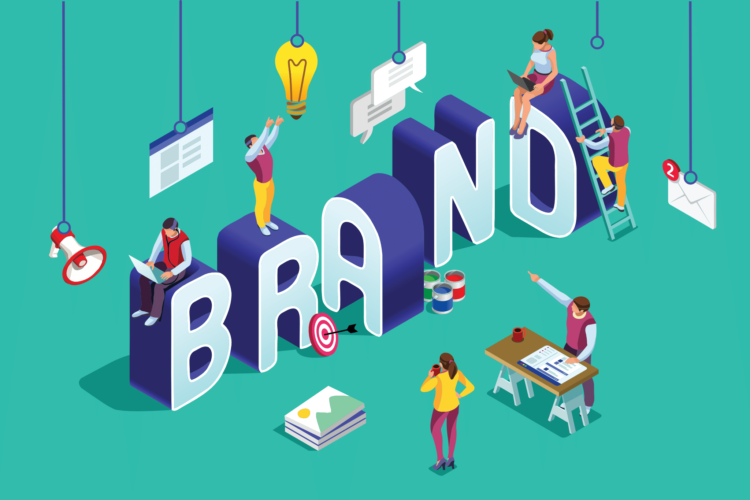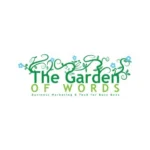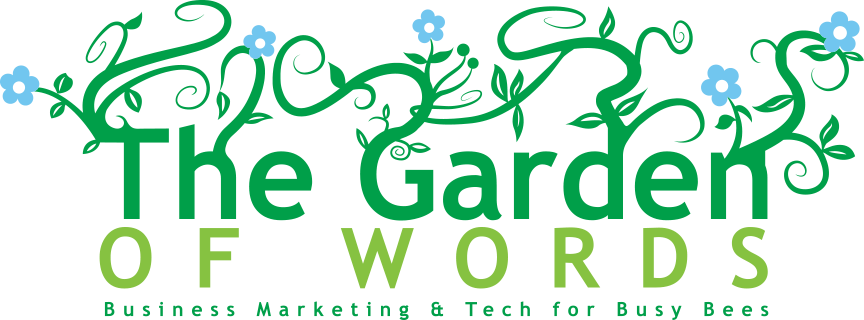We talk a lot about building your “brand” here at The Garden of Words, and one tool that can help you maintain your branding consistently is a “brand kit.” Whether you work on your own or have a team behind you, a brand kit includes the tools and information you or anyone working for you needs to uphold your brand identity across email, images, graphics, social media, and websites.
Why Do I Need a Brand Kit?

Even if you are the only person in your business, a brand kit helps remind you to keep visual elements consistent so people recognize your brand. If you have an admin or assistant or occasionally work with a graphic designer, these people need access to your brand kit so they understand how to create visual content that represents your brand.
A brand kit is a little different from (although certainly related to) brand guidelines, which are a set of standards and details about how your brand should be communicated (words and phrases to use, words and phrases to never use, what your voice is, how you want people to feel after interacting with your brand, etc.). We think of the brand kit as being a part of the overall brand guidelines, but really, don’t get hung up on this. Brand kits are often a work in progress as you develop your brand identity—simply start with some basics and fine-tune and add as you go.
What Should I Include in My Brand Kit?
It’s good to start with a few obvious basics, and then build it up as you go. If you’re starting from scratch or rebranding your business, you can work with a good graphic designer to create a logo. They will ask you all sorts of questions to get to know you and your business better, and can deliver logos with brand colors and fonts for you and your team to use.
- Business logos: We recommend having several variations of your logo in high-resolution formats (JPEG, PDF, PNG, TIFF, etc.). You may have a main logo version for your social media “profile” pics, another for your website banner, and vertical and horizontal options.
- Approved color palettes: Most brands have 1–2 colors that they are associated with, with a short list of approved secondary colors, and yours should be no different. Include all of your brand colors, using hex codes or the like for exacting consistency.
- Font styles: Take a look at the fonts you use for logos, graphics, infographics, quick tips, etc. Choose one primary font and then a coordinating secondary font. In Canva, you can create font combinations that are plug and play.
- Brand attributes: Create a short list of adjectives like happy, reassured, and inspired, or educated, motivated, and empowered. This is how you want people to feel when they see/hear/read any content from you.
- Approved filters for images: Do you have someone covering social media for you? Or do you like playing around with image filters yourself? Either way, choose a filter that’s your go-to and stick with it. On Instagram, a filter like Hefe looks vivid and dramatic, while Reyes is washed-out, and Slumber looks more traditional. This goes back to brand attributes, as each one of these filters creates a mood. So ask yourself which filter supports the mood you want to create. Light and airy? Dark and dramatic? Fresh and modern?
- Your target market and why your brand matters to them: Anyone who touches your brand needs to understand this. Who is your target market (retired women over 50 who garden, first-time gardeners on a budget, homesteaders with strong DIY interests?) and why is your brand important to them (teaches a skill, solves a problem, takes them on a journey of self-sufficiency, helps them grow their business, etc.)? Otherwise, they’re sending out great content on your behalf that isn’t getting to the people that need to see it.
- Your tagline or branded hashtag: These are great to use on website banners, social media posts, even branded merchandise.
- Contact information: When is contact information included? Where is it placed? What information should always be included (name, email, phone number)?
Examples We Love
When you glance at a website, if it’s cohesive and draws you in, you can bet there’s a brand kit at work behind the scenes. Here are some websites we love that have instantly recognizable branding that carries through their entire site, and no doubt is used in social media and newsletters as well:
- Theresa Loe/Living Homegrown: Theresa’s brand includes identifiable colors (dark rusty red, pale green, and gray), a registered tagline “Live farm fresh without the farm,” very specific fonts (a handwriting font, a subtitle font, and a complementary font). Even Theresa’s profile pic on the home page shows her in a trademark apron in coordinating colors. Perfect and cohesive brand.
- Easy to Grow Bulbs: One look at the home page and you know this is a company that specializes in bulbs and other plants, has a bright and cheerful persona, with bold colors and graphics. Vivid pink, orange, and yellow are the main graphic colors that are carried through on every page. Bright and quirky, but fresh and modern at the same time.
- Digging in Gathering: This is an annual conference for container gardening designers, and the website really shows their branding: A perfect fern green as the primary brand color, lush and colorful images, traditional font types, and a straightforward and conversational tone.
Pro Tip: If you have a pro Canva account, create a brand kit that includes all versions of your logo, your exact brand colors, and your brand fonts to make creating graphics easy and consistent.


